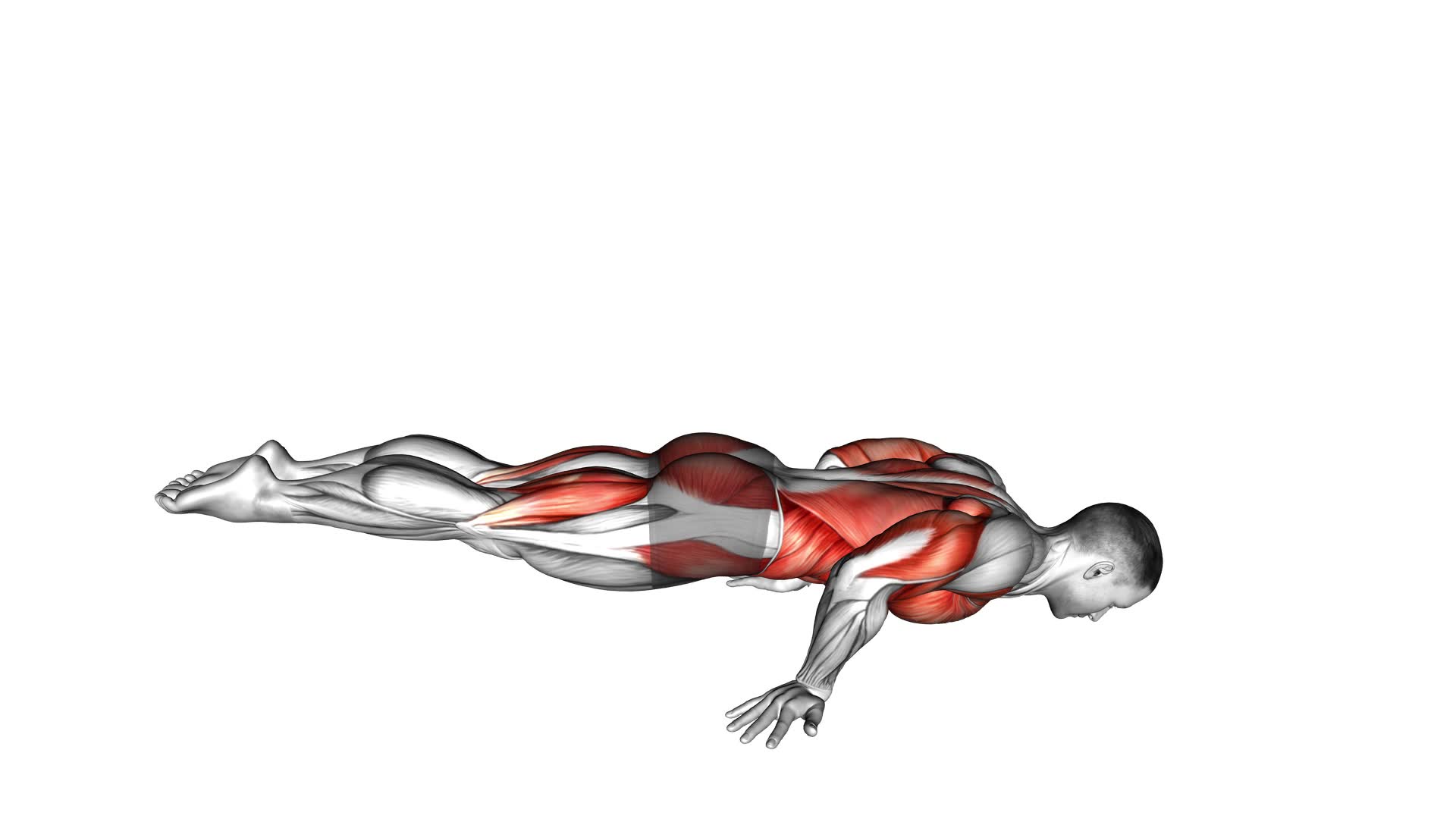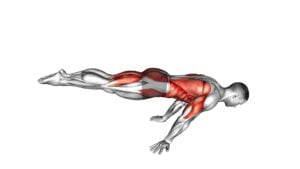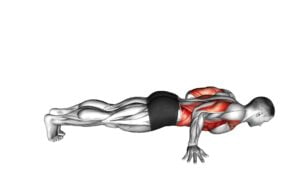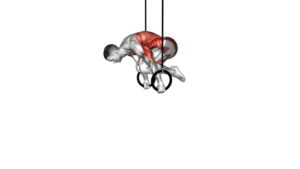Full Planche Push-up – Video Exercise Guide & Tips

Are you looking to master the full planche push-up? Look no further! In this video exercise guide, we'll walk you through the benefits, proper form, and progression exercises for beginners.
Watch This Exercise Video
We'll also cover common mistakes to avoid and provide valuable tips to help you conquer this challenging exercise.
Get ready to push your limits and achieve a whole new level of strength and control in your fitness journey. Let's dive in!
Key Takeaways
- Full Planche Push-ups activate multiple muscle groups
- Full Planche Push-ups increase overall body strength
- Full Planche Push-ups target chest, shoulders, and triceps
- Full Planche Push-ups develop upper body strength and definition
Benefits of Full Planche Push-ups
Experience the impressive strength gains that Full Planche Push-ups can provide. This challenging exercise activates multiple muscle groups, making it an effective way to increase overall body strength. The primary muscles targeted during Full Planche Push-ups are the chest, shoulders, and triceps. As you lower your body towards the ground, these muscles contract to control the movement and push your body back up. This constant muscle activation helps to develop upper body strength and definition.
In addition to targeting the upper body, Full Planche Push-ups also require significant core strength. Your core muscles, including the abs, obliques, and lower back, work together to stabilize your body during the exercise. This not only enhances your ability to perform the Full Planche Push-up but also improves your overall core stability and balance.
Proper Form and Technique
To perform Full Planche Push-ups with proper form and technique, it's crucial to consistently engage the targeted muscles and maintain a stable core throughout the exercise.
One common misconception about the Full Planche Push-up is that it solely relies on upper body strength. While upper body strength is important, this exercise also requires a strong core and proper body alignment.
To achieve the correct form, start in a push-up position with your hands slightly wider than shoulder-width apart. Slowly lean forward, shifting your weight onto your hands as you lift your feet off the ground. Keep your body straight and parallel to the floor, engaging your chest, shoulders, arms, and core muscles.
As you lower yourself down, maintain control and continue to engage your muscles. Remember to breathe throughout the movement.
If you aren't yet able to perform a full planche, there are variations and modifications you can try. These include tucking your knees or keeping one leg extended while the other is tucked. Practice these variations and gradually work towards the full planche push-up.
With consistent effort and proper technique, you can improve your strength and eventually master this challenging exercise.
Progression Exercises for Beginners
To progress as a beginner in Full Planche Push-ups and build strength, consistency and patience are key. Here are some beginner progressions to incorporate into your training program:
- Tuck Planche: Start by practicing the tuck planche, where you tuck your knees towards your chest while balancing on your hands. This helps develop the core and shoulder strength necessary for the full planche.
- Frog Stand: Master the frog stand, also known as the crow pose. This exercise helps you get comfortable balancing your body weight on your hands and strengthens your wrists and forearms.
- Elevated Planche Lean: Use parallettes or blocks to elevate your hands and practice leaning forward into a planche position. This helps build strength and stability in your shoulders and upper body.
- Planche Push-up Negatives: Start from the top position of a planche push-up and slowly lower yourself down to the ground, focusing on maintaining proper form and control. This eccentric movement builds strength and prepares you for the full planche.
- Advanced Frog Stand: Once you can hold a regular frog stand for an extended period, challenge yourself by extending one leg at a time. This increases the difficulty and further develops your balance and strength.
By incorporating these beginner progressions into your training program, you'll gradually build the strength and skills necessary to perform a full planche push-up.
Now, let's move on to the next section and discuss common mistakes to avoid.
Common Mistakes to Avoid
To avoid common mistakes while performing Full Planche Push-ups, focus on maintaining proper form and control throughout the exercise. Common mistakes to avoid include not engaging the core muscles, allowing the hips to sag, and not fully extending the arms.
One of the most common misconceptions about planche push-ups is that they solely require upper body strength. While upper body strength is important, proper form and technique are essential for success.
Engaging the core muscles is crucial for maintaining balance and stability during the exercise. It's important to keep the abs tight and the body in a straight line from head to toe.
Allowing the hips to sag is another common mistake that can compromise the effectiveness of the exercise and increase the risk of injury. Keep the hips lifted and engage the glutes to maintain a straight body position.
Fully extending the arms is essential for properly executing the full planche push-up. Avoid bending the elbows or stopping short of full extension. This ensures that you're fully engaging the chest, shoulder, and triceps muscles and maximizing the benefits of the exercise.
Tips for Mastering the Full Planche Push-up
Mastering the Full Planche Push-up requires consistent practice and focus on maintaining proper form and control throughout the exercise. Here are some tips to help you achieve this challenging move:
- Start with proper warm-up exercises to prepare your wrists and shoulders for the intense strain they'll endure during the Full Planche Push-up.
- Progress gradually by mastering the basic push-up and gradually increasing the difficulty by raising your feet on elevated surfaces.
- Strengthen your core muscles by incorporating exercises like planks, hollow body holds, and L-sits into your routine. A strong core is essential for maintaining balance and stability during the Full Planche Push-up.
- Pay attention to your form and technique. Keep your arms straight, engage your shoulder blades, and maintain a tight body position throughout the movement.
- Avoid overtraining and listen to your body. Pushing too hard without giving yourself enough time to rest and recover can lead to overuse injuries. Take breaks and allow your muscles to heal and rebuild.
Frequently Asked Questions
How Long Does It Take to Master the Full Planche Push-Up?
To master the full planche push-up, it takes time and dedication. You need to follow training progressions that gradually increase the difficulty of the exercise.
Avoid common mistakes like rushing the progressions or neglecting proper form. It's important to be patient and consistent with your training.
With practice and perseverance, you can achieve the full planche push-up and strengthen your upper body and core muscles.
Is the Full Planche Push-Up Suitable for All Fitness Levels?
Yes, the full planche push-up can be suitable for all fitness levels. However, it's important to note that it's an advanced exercise that requires a high level of strength and flexibility.
If you're a beginner, it's recommended to start with modifications and progressions for the full planche push-up. These modifications will help you build the necessary strength and technique before attempting the full exercise.
Can the Full Planche Push-Up Help With Building Upper Body Strength?
The full planche push-up is an excellent exercise for building upper body strength. By incorporating various variations of the full planche push up into your workout routine, you can target different muscle groups and challenge yourself at different fitness levels.
This exercise is known to engage the core, shoulders, chest, and triceps, helping you develop overall upper body strength. Adding the full planche push-up to your fitness regimen can lead to significant gains in strength and muscle definition.
Are There Any Specific Warm-Up Exercises Recommended Before Attempting the Full Planche Push-Up?
Before attempting the full planche push-up, it's crucial to perform specific warm-up exercises. These will help prepare your body for the intense strain it will endure.
Some recommended preparatory exercises include:
- Wrist stretches
- Shoulder mobility drills
- Core activation movements
These exercises will help improve your flexibility, stability, and strength in the areas required for the full planche push-up.
Can the Full Planche Push-Up Be Modified for Those With Wrist or Shoulder Injuries?
If you have wrist or shoulder injuries, you might be wondering if the full planche push-up can be modified for you. The good news is that there are modified variations of this exercise that can be done to accommodate your injuries.
It's important to consult with a medical professional or physical therapist to determine the best approach for you. They may also recommend specific rehabilitation exercises to help strengthen and rehabilitate your wrists or shoulders before attempting the full planche push-up.
Conclusion
In conclusion, mastering the full planche push-up can provide numerous benefits, including increased upper body strength and core stability.
By following the proper form and technique, beginners can gradually progress and avoid common mistakes.
With dedication and consistent practice, anyone can achieve the full planche push-up.
Remember to start with progression exercises and seek guidance from a professional trainer if needed.
Keep pushing yourself and enjoy the journey towards mastering this challenging exercise.

Author
Years ago, the spark of my life’s passion ignited in my mind the moment I stepped into the local gym for the first time. The inaugural bead of perspiration, the initial endeavor, the very first surge of endorphins, and a sense of pride that washed over me post-workout marked the beginning of my deep-seated interest in strength sports, fitness, and sports nutrition. This very curiosity blossomed rapidly into a profound fascination, propelling me to earn a Master’s degree in Physical Education from the Academy of Physical Education in Krakow, followed by a Sports Manager diploma from the Jagiellonian University. My journey of growth led me to gain more specialized qualifications, such as being a certified personal trainer with a focus on sports dietetics, a lifeguard, and an instructor for wellness and corrective gymnastics. Theoretical knowledge paired seamlessly with practical experience, reinforcing my belief that the transformation of individuals under my guidance was also a reflection of my personal growth. This belief holds true even today. Each day, I strive to push the boundaries and explore new realms. These realms gently elevate me to greater heights. The unique combination of passion for my field and the continuous quest for growth fuels my drive to break new ground.



